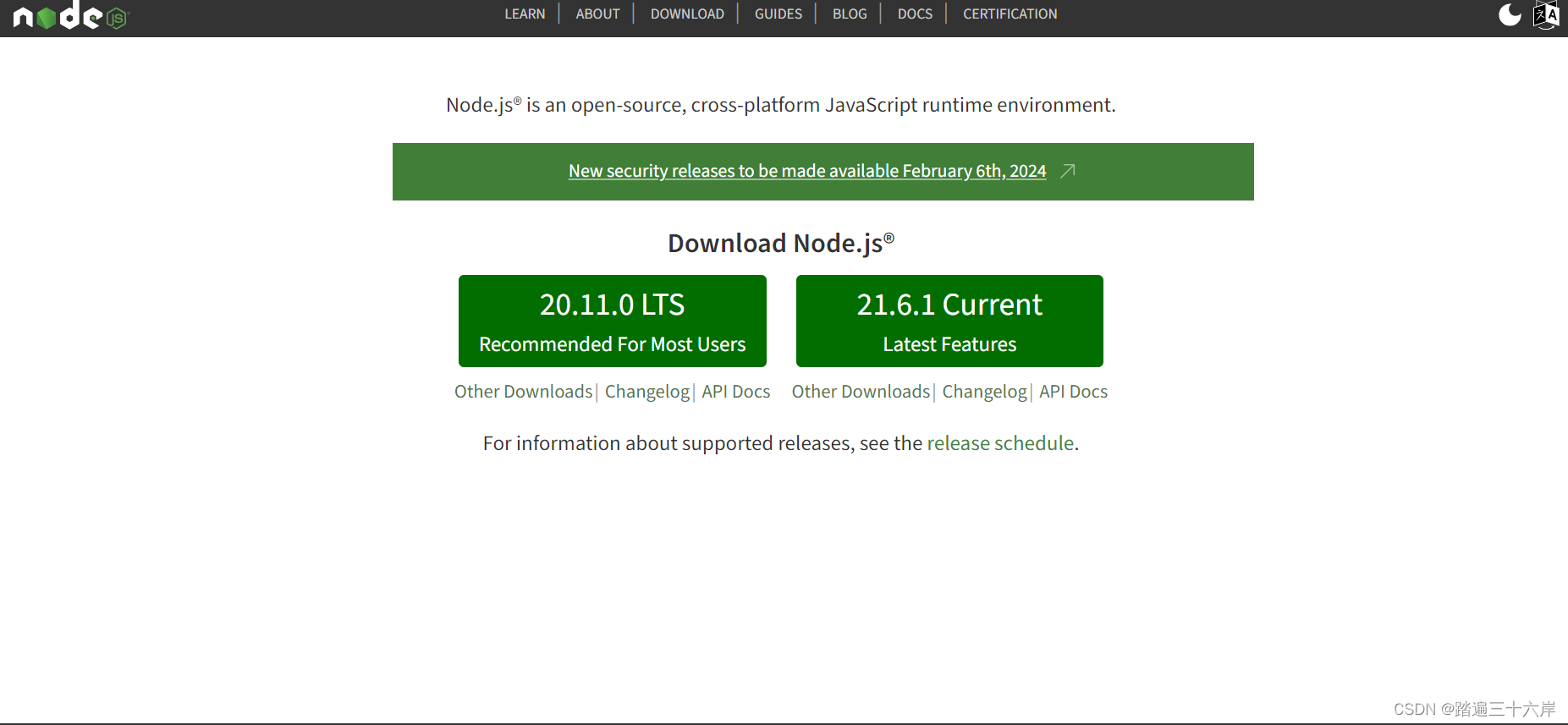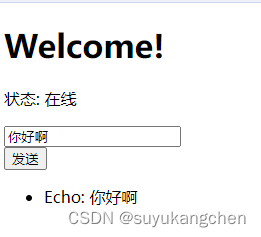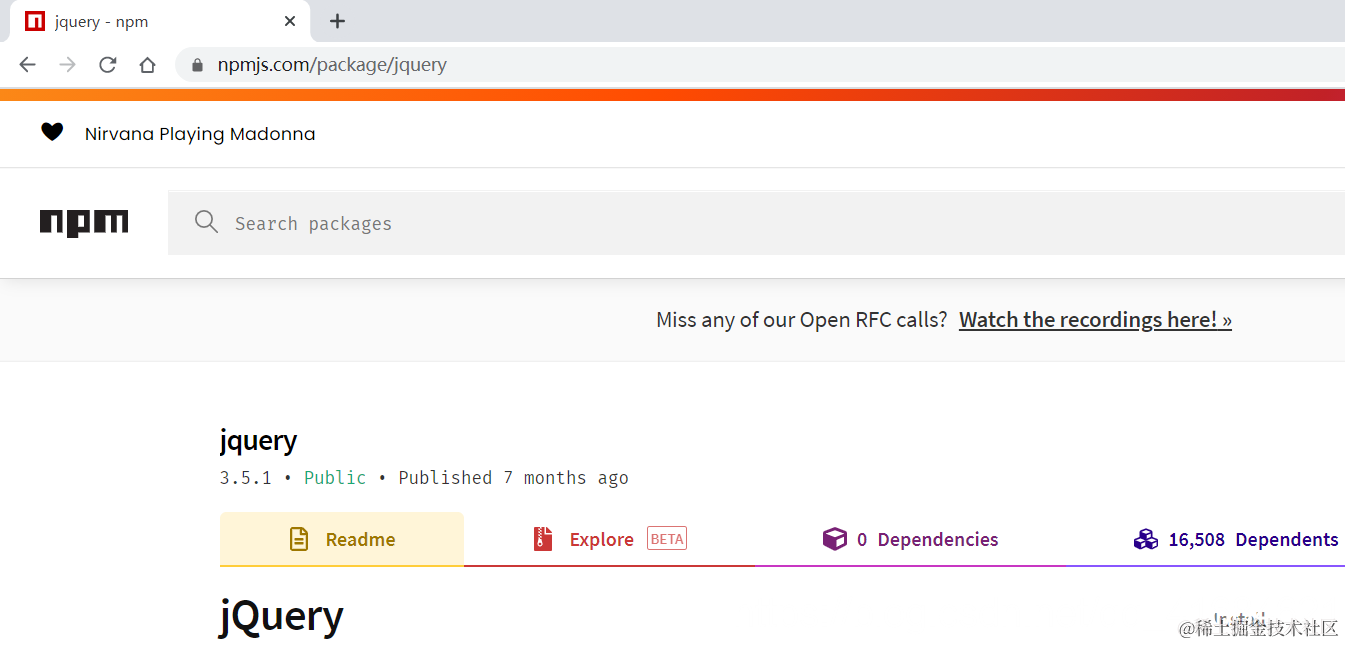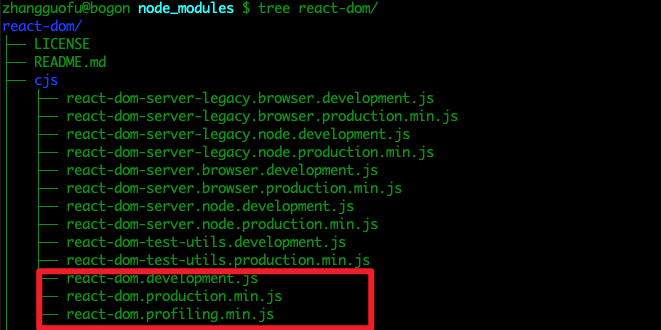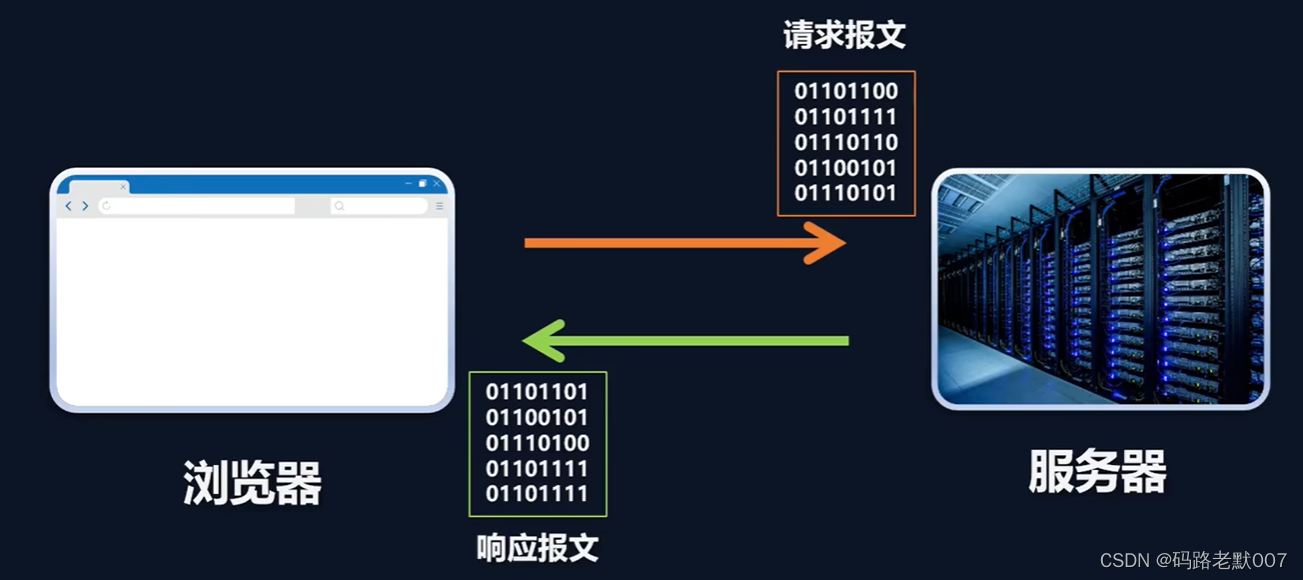
本文将对 Node.js 源码进行探索,深入理解 cjs 模块的加载过程。
const fs = require('fs');
const express = require('express');
const anotherModule = require('./another-module');没错,require 就是加载 cjs 模块的 API,但 V8 本身是没有 cjs 模块系统的,所以 node 是怎么通过 require找到模块并且加载的呢?我们今天将对 Node.js 源码进行探索,深入理解 cjs 模块的加载过程。
git head :881174e016d6c27b20c70111e6eae2296b6c6293
代码链接:https://github.com/nodejs/node/tree/881174e016d6c27b20c70111e6eae2296b6c6293
内置模块
为了知道 require 的工作逻辑,我们需要先了解内置模块是如何被加载到 node 中的(诸如 ‘fs‘,’path‘,’child_process‘,也包括无法被用户引用的内部模块),准备好代码之后,我们首先要从 node 启动开始阅读。
node 的 main 函数在 src/node_main.cc内,通过调用 API node::Start来启动一个 node 实例:
src/node_main.cc地址:https://github.com/nodejs/node/blob/881174e016d6c27b20c70111e6eae2296b6c6293/src/node_main.cc#L105
node::Start地址:https://github.com/nodejs/node/blob/881174e016d6c27b20c70111e6eae2296b6c6293/src/node.cc#L1134
int Start(int argc, char** argv) {
InitializationResult result = InitializeOncePerProcess(argc, argv);
if (result.early_return) {
return result.exit_code;
}
{
Isolate::CreateParams params;
const std::vector<size_t>* indices = nullptr;
const EnvSerializeInfo* env_info = nullptr;
bool use_node_snapshot =
per_process::cli_options->per_isolate->node_snapshot;
if (use_node_snapshot) {
v8::StartupData* blob = NodeMainInstance::GetEmbeddedSnapshotBlob();
if (blob != nullptr) {
params.snapshot_blob = blob;
indices = NodeMainInstance::GetIsolateDataIndices();
env_info = NodeMainInstance::GetEnvSerializeInfo();
}
}
uv_loop_configure(uv_default_loop(), UV_METRICS_IDLE_TIME);
NodeMainInstance main_instance(&params,
uv_default_loop(),
per_process::v8_platform.Platform(),
result.args,
result.exec_args,
indices);
result.exit_code = main_instance.Run(env_info);
}
TearDownOncePerProcess();
return result.exit_code;
}这里创建了事件循环,且创建了一个 NodeMainInstance 的实例 main_instance 并调用了它的 Run方法:
Run地址:https://github.com/nodejs/node/blob/881174e016d6c27b20c70111e6eae2296b6c6293/src/node_main_instance.cc#L127
int NodeMainInstance::Run(const EnvSerializeInfo* env_info) {
Locker locker(isolate_);
Isolate::Scope isolate_scope(isolate_);
HandleScope handle_scope(isolate_);
int exit_code = 0;
DeleteFnPtr<Environment, FreeEnvironment> env =
CreateMainEnvironment(&exit_code, env_info);
CHECK_NOT_NULL(env);
Context::Scope context_scope(env->context());
Run(&exit_code, env.get());
return exit_code;
}
Run 方法中调用 CreateMainEnvironment来创建并初始化环境:
CreateMainEnvironment地址:https://github.com/nodejs/node/blob/881174e016d6c27b20c70111e6eae2296b6c6293/src/node_main_instance.cc#L170
Environment* CreateEnvironment(
IsolateData* isolate_data,
Local<Context> context,
const std::vector<std::string>& args,
const std::vector<std::string>& exec_args,
EnvironmentFlags::Flags flags,
ThreadId thread_id,
std::unique_ptr<InspectorParentHandle> inspector_parent_handle) {
Isolate* isolate = context->GetIsolate();
HandleScope handle_scope(isolate);
Context::Scope context_scope(context);
// TODO(addaleax): This is a much better place for parsing per-Environment
// options than the global parse call.
Environment* env = new Environment(
isolate_data, context, args, exec_args, nullptr, flags, thread_id);
#if HAVE_INSPECTOR
if (inspector_parent_handle) {
env->InitializeInspector(
std::move(static_cast<InspectorParentHandleImpl*>(
inspector_parent_handle.get())->impl));
} else {
env->InitializeInspector({});
}
#endif
if (env->RunBootstrapping().IsEmpty()) {
FreeEnvironment(env);
return nullptr;
}
return env;
}通过创建 Environment 对象 env 并调用其 RunBootstrapping方法:
RunBootstrapping地址:https://github.com/nodejs/node/blob/881174e016d6c27b20c70111e6eae2296b6c6293/src/node.cc#L398
MaybeLocal<Value> Environment::RunBootstrapping() {
EscapableHandleScope scope(isolate_);
CHECK(!has_run_bootstrapping_code());
if (BootstrapInternalLoaders().IsEmpty()) {
return MaybeLocal<Value>();
}
Local<Value> result;
if (!BootstrapNode().ToLocal(&result)) {
return MaybeLocal<Value>();
}
// Make sure that no request or handle is created during bootstrap -
// if necessary those should be done in pre-execution.
// Usually, doing so would trigger the checks present in the ReqWrap and
// HandleWrap classes, so this is only a consistency check.
CHECK(req_wrap_queue()->IsEmpty());
CHECK(handle_wrap_queue()->IsEmpty());
DoneBootstrapping();
return scope.Escape(result);
}这里的 BootstrapInternalLoaders实现了 node 模块加载过程中非常重要的一步:
通过包装并执行 internal/bootstrap/loaders.js获取内置模块的 nativeModulerequire函数用于加载内置的 js 模块,获取 internalBinding用于加载内置的 C++ 模块,NativeModule则是专门用于内置模块的小型模块系统。
BootstrapInternalLoaders地址:https://github.com/nodejs/node/blob/881174e016d6c27b20c70111e6eae2296b6c6293/src/node.cc#L298
internal/bootstrap/loaders.js地址:https://github.com/nodejs/node/blob/881174e016d6c27b20c70111e6eae2296b6c6293/lib/internal/bootstrap/loaders.js#L326
nativeModulerequire地址:https://github.com/nodejs/node/blob/881174e016d6c27b20c70111e6eae2296b6c6293/lib/internal/bootstrap/loaders.js#L326
nativeModulerequire地址:https://github.com/nodejs/node/blob/881174e016d6c27b20c70111e6eae2296b6c6293/lib/internal/bootstrap/loaders.js#L332
internalBinding地址:https://github.com/nodejs/node/blob/881174e016d6c27b20c70111e6eae2296b6c6293/lib/internal/bootstrap/loaders.js#L164
function nativeModuleRequire(id) {
if (id === loaderId) {
return loaderExports;
}
const mod = NativeModule.map.get(id);
// Can't load the internal errors module from here, have to use a raw error.
// eslint-disable-next-line no-restricted-syntax
if (!mod) throw new TypeError(`Missing internal module '${id}'`);
return mod.compileForInternalLoader();
}
const loaderExports = {
internalBinding,
NativeModule,
require: nativeModuleRequire
};
return loaderExports;需要注意的是,这个 require 函数只会被用于内置模块的加载,用户模块的加载并不会用到它。(这也是为什么我们通过打印 require('module')._cache 可以看到所有用户模块,却看不到 fs 等内置模块的原因,因为两者的加载和缓存维护方式并不一样)。
用户模块
接下来让我们把目光移回到 NodeMainInstance::Run函数:
NodeMainInstance::Run地址:https://github.com/nodejs/node/blob/881174e016d6c27b20c70111e6eae2296b6c6293/src/node_main_instance.cc#L127
int NodeMainInstance::Run(const EnvSerializeInfo* env_info) {
Locker locker(isolate_);
Isolate::Scope isolate_scope(isolate_);
HandleScope handle_scope(isolate_);
int exit_code = 0;
DeleteFnPtr<Environment, FreeEnvironment> env =
CreateMainEnvironment(&exit_code, env_info);
CHECK_NOT_NULL(env);
Context::Scope context_scope(env->context());
Run(&exit_code, env.get());
return exit_code;
}我们已经通过 CreateMainEnvironment 函数创建好了一个 env 对象,这个 Environment 实例已经有了一个模块系统 NativeModule 用于维护内置模块。
重载版本地址:https://github.com/nodejs/node/blob/881174e016d6c27b20c70111e6eae2296b6c6293/src/node_main_instance.cc#L142
void NodeMainInstance::Run(int* exit_code, Environment* env) {
if (*exit_code == 0) {
LoadEnvironment(env, StartExecutionCallback{});
*exit_code = SpinEventLoop(env).FromMaybe(1);
}
ResetStdio();
// TODO(addaleax): Neither NODE_SHARED_MODE nor HAVE_INSPECTOR really
// make sense here.
#if HAVE_INSPECTOR && defined(__POSIX__) && !defined(NODE_SHARED_MODE)
struct sigaction act;
memset(&act, 0, sizeof(act));
for (unsigned nr = 1; nr < kMaxSignal; nr += 1) {
if (nr == SIGKILL || nr == SIGSTOP || nr == SIGPROF)
continue;
act.sa_handler = (nr == SIGPIPE) ? SIG_IGN : SIG_DFL;
CHECK_EQ(0, sigaction(nr, &act, nullptr));
}
#endif
#if defined(LEAK_SANITIZER)
__lsan_do_leak_check();
#endif
}
LoadEnvironment地址:https://github.com/nodejs/node/blob/881174e016d6c27b20c70111e6eae2296b6c6293/src/api/environment.cc#L403
MaybeLocal<Value> LoadEnvironment(
Environment* env,
StartExecutionCallback cb) {
env->InitializeLibuv();
env->InitializeDiagnostics();
return StartExecution(env, cb);
}
StartExecution地址:https://github.com/nodejs/node/blob/881174e016d6c27b20c70111e6eae2296b6c6293/src/node.cc#L455
MaybeLocal<Value> StartExecution(Environment* env, StartExecutionCallback cb) {
// 已省略其他运行方式,我们只看 `node index.js` 这种情况,不影响我们理解模块系统
if (!first_argv.empty() && first_argv != "-") {
return StartExecution(env, "internal/main/run_main_module");
}
}在 StartExecution(env, "internal/main/run_main_module")这个调用中,我们会包装一个 function,并传入刚刚从 loaders 中导出的 require 函数,并运行 lib/internal/main/run_main_module.js内的代码:
lib/internal/main/run_main_module.js地址:https://github.com/nodejs/node/blob/881174e016d6c27b20c70111e6eae2296b6c6293/lib/internal/main/run_main_module.js
'use strict';
const {
prepareMainThreadExecution
} = require('internal/bootstrap/pre_execution');
prepareMainThreadExecution(true);
markBootstrapComplete();
// Note: this loads the module through the ESM loader if the module is
// determined to be an ES module. This hangs from the CJS module loader
// because we currently allow monkey-patching of the module loaders
// in the preloaded scripts through require('module').
// runMain here might be monkey-patched by users in --require.
// XXX: the monkey-patchability here should probably be deprecated.
require('internal/modules/cjs/loader').Module.runMain(process.argv[1]);所谓的包装 function 并传入 require,伪代码如下:
(function(require, /* 其他入参 */) {
// 这里是 internal/main/run_main_module.js 的文件内容
})();所以这里是通过内置模块的 require 函数加载了 lib/internal/modules/cjs/loader.js导出的 Module 对象上的 `runMain` 方法,不过我们在 loader.js 中并没有发现 runMain 函数,其实这个函数是在 lib/internal/bootstrap/pre_execution.js中被定义到 Module 对象上的:
lib/internal/modules/cjs/loader.js地址:https://github.com/nodejs/node/blob/881174e016d6c27b20c70111e6eae2296b6c6293/lib/internal/modules/cjs/loader.js#L172
lib/internal/bootstrap/pre_execution.js地址:https://github.com/nodejs/node/blob/881174e016d6c27b20c70111e6eae2296b6c6293/lib/internal/bootstrap/pre_execution.js#L428
function initializeCJSLoader() {
const CJSLoader = require('internal/modules/cjs/loader');
if (!noGlobalSearchPaths) {
CJSLoader.Module._initPaths();
}
// TODO(joyeecheung): deprecate this in favor of a proper hook?
CJSLoader.Module.runMain =
require('internal/modules/run_main').executeUserEntryPoint;
}在 lib/internal/modules/run_main.js中找到 executeUserEntryPoint 方法:
lib/internal/modules/run_main.js地址:https://github.com/nodejs/node/blob/881174e016d6c27b20c70111e6eae2296b6c6293/lib/internal/modules/run_main.js#L74
function executeUserEntryPoint(main = process.argv[1]) {
const resolvedMain = resolveMainPath(main);
const useESMLoader = shouldUseESMLoader(resolvedMain);
if (useESMLoader) {
runMainESM(resolvedMain || main);
} else {
// Module._load is the monkey-patchable CJS module loader.
Module._load(main, null, true);
}
}参数 main 即为我们传入的入口文件 index.js。可以看到,index.js 作为一个 cjs 模块应该被 Module._load 加载,那么 _load干了些什么呢?这个函数是 cjs 模块加载过程中最重要的一个函数,值得仔细阅读:
// `_load` 函数检查请求文件的缓存
// 1. 如果模块已经存在,返回已缓存的 exports 对象
// 2. 如果模块是内置模块,通过调用 `NativeModule.prototype.compileForPublicLoader()`
// 获取内置模块的 exports 对象,compileForPublicLoader 函数是有白名单的,只能获取公开
// 内置模块的 exports。
// 3. 以上两者皆为否,创建新的 Module 对象并保存到缓存中,然后通过它加载文件并返回其 exports。
// request:请求的模块,比如 `fs`,`./another-module`,'@pipcook/core' 等
// parent:父模块,如在 `a.js` 中 `require('b.js')`,那么这里的 request 为 'b.js',
parent 为 `a.js` 对应的 Module 对象
// isMain: 除入口文件为 `true` 外,其他模块都为 `false`
Module._load = function(request, parent, isMain) {
let relResolveCacheIdentifier;
if (parent) {
debug('Module._load REQUEST %s parent: %s', request, parent.id);
// relativeResolveCache 是模块路径缓存,
// 用于加速父模块所在目录下的所有模块请求当前模块时
// 可以直接查询到实际路径,而不需要通过 _resolveFilename 查找文件
relResolveCacheIdentifier = `${parent.path}x00${request}`;
const filename = relativeResolveCache[relResolveCacheIdentifier];
if (filename !== undefined) {
const cachedModule = Module._cache[filename];
if (cachedModule !== undefined) {
updateChildren(parent, cachedModule, true);
if (!cachedModule.loaded)
return getExportsForCircularRequire(cachedModule);
return cachedModule.exports;
}
delete relativeResolveCache[relResolveCacheIdentifier];
}
}
// 尝试查找模块文件路径,找不到模块抛出异常
const filename = Module._resolveFilename(request, parent, isMain);
// 如果是内置模块,从 `NativeModule` 加载
if (StringPrototypeStartsWith(filename, 'node:')) {
// Slice 'node:' prefix
const id = StringPrototypeSlice(filename, 5);
const module = loadNativeModule(id, request);
if (!module?.canBeRequiredByUsers) {
throw new ERR_UNKNOWN_BUILTIN_MODULE(filename);
}
return module.exports;
}
// 如果缓存中已存在,将当前模块 push 到父模块的 children 字段
const cachedModule = Module._cache[filename];
if (cachedModule !== undefined) {
updateChildren(parent, cachedModule, true);
// 处理循环引用
if (!cachedModule.loaded) {
const parseCachedModule = cjsParseCache.get(cachedModule);
if (!parseCachedModule || parseCachedModule.loaded)
return getExportsForCircularRequire(cachedModule);
parseCachedModule.loaded = true;
} else {
return cachedModule.exports;
}
}
// 尝试从内置模块加载
const mod = loadNativeModule(filename, request);
if (mod?.canBeRequiredByUsers) return mod.exports;
// Don't call updateChildren(), Module constructor already does.
const module = cachedModule || new Module(filename, parent);
if (isMain) {
process.mainModule = module;
module.id = '.';
}
// 将 module 对象加入缓存
Module._cache[filename] = module;
if (parent !== undefined) {
relativeResolveCache[relResolveCacheIdentifier] = filename;
}
// 尝试加载模块,如果加载失败则删除缓存中的 module 对象,
// 同时删除父模块的 children 内的 module 对象。
let threw = true;
try {
module.load(filename);
threw = false;
} finally {
if (threw) {
delete Module._cache[filename];
if (parent !== undefined) {
delete relativeResolveCache[relResolveCacheIdentifier];
const children = parent?.children;
if (ArrayIsArray(children)) {
const index = ArrayPrototypeIndexOf(children, module);
if (index !== -1) {
ArrayPrototypeSplice(children, index, 1);
}
}
}
} else if (module.exports &&
!isProxy(module.exports) &&
ObjectGetPrototypeOf(module.exports) ===
CircularRequirePrototypeWarningProxy) {
ObjectSetPrototypeOf(module.exports, ObjectPrototype);
}
}
// 返回 exports 对象
return module.exports;
};module 对象上的 load函数用于执行一个模块的加载:
load地址:https://github.com/nodejs/node/blob/881174e016d6c27b20c70111e6eae2296b6c6293/lib/internal/modules/cjs/loader.js#L963
Module.prototype.load = function(filename) {
debug('load %j for module %j', filename, this.id);
assert(!this.loaded);
this.filename = filename;
this.paths = Module._nodeModulePaths(path.dirname(filename));
const extension = findLongestRegisteredExtension(filename);
// allow .mjs to be overridden
if (StringPrototypeEndsWith(filename, '.mjs') && !Module._extensions['.mjs'])
throw new ERR_REQUIRE_ESM(filename, true);
Module._extensions[extension](this, filename);
this.loaded = true;
const esmLoader = asyncESM.esmLoader;
// Create module entry at load time to snapshot exports correctly
const exports = this.exports;
// Preemptively cache
if ((module?.module === undefined ||
module.module.getStatus() < kEvaluated) &&
!esmLoader.cjsCache.has(this))
esmLoader.cjsCache.set(this, exports);
};实际的加载动作是在 Module._extensions[extension](this, filename); 中进行的,根据扩展名的不同,会有不同的加载策略:
-
.js:调用
fs.readFileSync读取文件内容,将文件内容包在 wrapper 中,需要注意的是,这里的require是Module.prototype.require而非内置模块的require方法。const wrapper = [ '(function (exports, require, module, __filename, __dirname) { ', 'n});', ];
.js地址:https://github.com/nodejs/node/blob/881174e016d6c27b20c70111e6eae2296b6c6293/lib/internal/modules/cjs/loader.js#L1104
.json地址:https://github.com/nodejs/node/blob/881174e016d6c27b20c70111e6eae2296b6c6293/lib/internal/modules/cjs/loader.js#L1152
.node地址:https://github.com/nodejs/node/blob/881174e016d6c27b20c70111e6eae2296b6c6293/lib/internal/modules/cjs/loader.js#L1170
而 Module.prototype.require 函数也是调用了静态方法 Module._load实现模块加载的:
Module.prototype.require = function(id) {
validateString(id, 'id');
if (id === '') {
throw new ERR_INVALID_ARG_VALUE('id', id,
'must be a non-empty string');
}
requireDepth++;
try {
return Module._load(id, this, /* isMain */ false);
} finally {
requireDepth--;
}
};看到这里,cjs 模块的加载过程已经基本清晰了:
-
运行内置模块
run_main -
通过
module的_load方法加载入口文件,在加载时通过传入module.require和module.exports等让入口文件可以正常require其他依赖模块并递归让整个依赖树被完整加载。
在清楚了 cjs 模块加载的完整流程之后,我们还可以顺着这条链路阅读其他代码,比如 global 变量的初始化,esModule 的管理方式等,更深入地理解 node 内的各种实现。
我们是阿里巴巴-大淘宝技术–营销互动团队(原频道与D2C智能团队),也是阿里经济体前端委员会智能化方向的核心团队,隶属于大淘宝技术(大淘宝技术,一支致力于成为全球最懂商业的技术创新团队,旗下包含淘宝技术、天猫技术等团队和业务,是一支是具有商业和技术双重基因的螺旋体)。
我们在 「杭州阿里巴巴西溪园区」 办公,
我们的定位是「用诗人的浪漫和科学家的严谨打造最懂 AI 的 smart and international 的前端团队」,我们的使命是「前端智能让业务创新更高效」。
✿ 拓展阅读
作者|周飞宇(牟牟)
编辑|橙子君

原文地址:https://blog.csdn.net/Taobaojishu/article/details/127063749
本文来自互联网用户投稿,该文观点仅代表作者本人,不代表本站立场。本站仅提供信息存储空间服务,不拥有所有权,不承担相关法律责任。
如若转载,请注明出处:http://www.7code.cn/show_35046.html
如若内容造成侵权/违法违规/事实不符,请联系代码007邮箱:suwngjj01@126.com进行投诉反馈,一经查实,立即删除!




